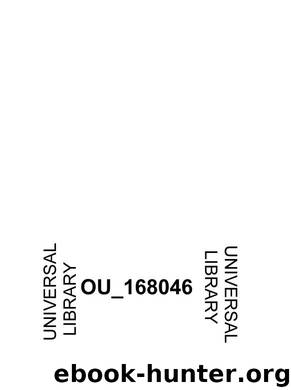Methods Of Operations Research by Morse Philip M

Author:Morse,Philip M.
Language: eng
Format: mobi
Tags: Generalities about the pure sciences. Mathematical sciences in the broad sense, NATURAL SCIENCES, Generalities about the pure sciences
Publisher: Chapman And Hall Limited.
Published: 1951-04-18T05:00:00+00:00
P-O-1
p.Q.3
FIGURE 1. Solutions of the generalized Lanchester equations for a — 6 - 2, c = d =» 1, for different productive capacities r and Q and different initial forces m 0 and n 0 . (dm/dt) — P — an — cm, (dn/dt) » Q » bm — dn.
winner started out with a two to one handicap in initial fighting strength. This initial disadvantage was more than overcome by a three to one production advantage. For the first third of the conflict, the Blue forces were still further depleted, and for more than half of the duration of the conflict the Blue forces were outnumbered by the Red forces. Once the initial handicap had been overcome by the larger production, however, the advantage rapidly became decisive and the Red forces were wiped out in short order. The increasing rapidity of the final debacle is a characteristic of Lanchester's equations and is met \\ ith, to a certain extent, in actual warfare.
4.4.3 Destruction of Production
The generalized Lanchester's equations, discussed above, are capable of somewhat more sophisticated interpretation than has been given them in the first part of this section. We there assumed that each combatant maintained his productive capacity constant. This never has been exactly true, and since the advent of the strategic airforce it is far from being true. The productive capacity of a nation depends on the strength of the enemy's strategic forces, and also on the strength of its own defenses. Production di-
minishes as the enemy's strategic forces increase, and increases as its own defensive forces increase. Each side must apportion its forces between defense and strategic offense, so as simultaneously to diminish the enemy's productive capacity and to wipe out the enemy's defensive forces in the most expeditious manner.
It will be of interest to work out a crude approximation to this state of affairs. We assume that both sides divide their total forces into two parts:
m = m t -f m t ; n = n t 4- n, ;
m t , n t : tactical forces; m, t n f , : strategic forces.
The strategic forces are directed only against the enemy's productive capacity, whereas the tactical forces are directed against the enemy's strategic and tactical forces. The tactical forces are the "fighting forces" and their attrition rates, therefore, correspond to the generalized Lanchester's equation discussed above (at least to the rough degree of approximation which concerns us here).
The effect of the strategic forces is shown in a modification of the enemy's productive rate. It takes a certain amount of strategic force to keep a certain amount of the enemy's factories out of commission.
STRATEGICAL KINEMATICS
Therefore, one might expect, to the first approximation, that the diminution in the enemy's production is proportional to the strength of one's strategic force. The effectiveness of this force, however, depends on the strength of the enemy's tactical force, which in part defends his productive capacity. To a very crude approximation, one might expect that this factor of effectiveness, for diminution
Download
This site does not store any files on its server. We only index and link to content provided by other sites. Please contact the content providers to delete copyright contents if any and email us, we'll remove relevant links or contents immediately.
Modelling of Convective Heat and Mass Transfer in Rotating Flows by Igor V. Shevchuk(6219)
Weapons of Math Destruction by Cathy O'Neil(5820)
Factfulness: Ten Reasons We're Wrong About the World – and Why Things Are Better Than You Think by Hans Rosling(4482)
Descartes' Error by Antonio Damasio(3160)
A Mind For Numbers: How to Excel at Math and Science (Even If You Flunked Algebra) by Barbara Oakley(3100)
Factfulness_Ten Reasons We're Wrong About the World_and Why Things Are Better Than You Think by Hans Rosling(3041)
TCP IP by Todd Lammle(3009)
Applied Predictive Modeling by Max Kuhn & Kjell Johnson(2906)
Fooled by Randomness: The Hidden Role of Chance in Life and in the Markets by Nassim Nicholas Taleb(2855)
The Tyranny of Metrics by Jerry Z. Muller(2844)
The Book of Numbers by Peter Bentley(2779)
The Great Unknown by Marcus du Sautoy(2532)
Once Upon an Algorithm by Martin Erwig(2471)
Easy Algebra Step-by-Step by Sandra Luna McCune(2466)
Lady Luck by Kristen Ashley(2409)
Practical Guide To Principal Component Methods in R (Multivariate Analysis Book 2) by Alboukadel Kassambara(2377)
Police Exams Prep 2018-2019 by Kaplan Test Prep(2354)
All Things Reconsidered by Bill Thompson III(2259)
Linear Time-Invariant Systems, Behaviors and Modules by Ulrich Oberst & Martin Scheicher & Ingrid Scheicher(2229)
